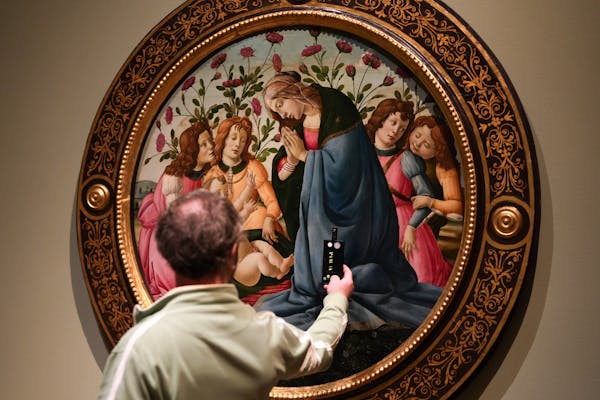Tucked in a labyrinth-like storage area beneath the University of Minnesota's Andersen Library is the world's largest collection of Sherlock Holmes items — more than 60,000 pieces of Holmes history, from original manuscripts to rare Sherlockian memorabilia.
Some of these artifacts have spent the past decade on tour as part of "Sherlock Holmes: The Exhibition," an international exhibit that was designed and developed in St. Paul. Despite its local roots, the exhibit has never been on view in Minnesota — until now.
Until April 2, the interactive exhibit at the Minnesota History Center allows visitors to step into the shoes of Holmes and Watson, learn about forensic science, deduction and the investigative process, all while trying to solve a case of their own.
The exhibit was the brainchild of designer, curator and content developer Geoffrey M. Curley, who was then at the Museum of Science and Industry in Chicago. Curley wanted to find a way to engage the public in history and science. But how?
The solution turned out to be elementary.
"We started looking at different characters in literature and film that may align with the very basic principles of science," Curley said. "Holmes aligns 100% with contemporary science, really the foundation of it, which is the scientific method through observation."
Curley's company, Geoffrey M. Curley + Associates, partnered with the St. Paul-based Exhibits Development Group to create the exhibit, which premiered in 2013 at the Oregon Museum of Science and Industry and has been touring ever since.
From London to St. Paul
Dimly lit and lined with fabricated cobblestone walls, the exhibit evokes the shadowy streets of Victorian-era London — and a carefully designed crime scene. There's been a murder, and it'll take some Sherlock-style sleuthing to solve the case.
But first, there's a history lesson on the mastermind behind the iconic detective. The initial gallery offers an introduction to renowned doctor-turned-writer Sir Arthur Conan Doyle, who authored the four novels and 56 short stories that make up the Holmes canon.
"This first gallery gives an understanding of where Doyle's head was at," Curley said. "What could empower him to write such an impactful character that utilizes the science, history and logical thinking that no other author really had at that time?"
The display includes one-of-a-kind artifacts from the University of Minnesota, including pages from Doyle's original manuscript of "The Hound of the Baskervilles" and an early publication of "Beeton's Christmas Annual," an 1887 magazine in which the very first Holmes story was published.
Tim Johnson, the university's E.W. McDiarmid Curator of the Sherlock Holmes Collections (plural, Johnson pointed out, because it's technically a "collection of collections"), explained that in 1974, the Andersen library acquired a few first editions from James C. Iraldi, a collector and member of the longstanding organization of Holmes enthusiasts known as the Baker Street Irregulars.
But it was an important donation in 1978 that put the university's collections on the map.
Dr. Philip Hench, a Mayo Clinic rheumatologist and Nobel Prize winner, amassed a valuable collection of rare Holmes items throughout his lifetime, including the original works featured in the exhibition. Following Hench's death in 1965, his widow donated the collection to the university.
"When that arrived here, it was like the Sherlockian world sat up and took notice, and wondered 'OK, what's going on at the University of Minnesota?'" Johnson said.
The collections attracted other donors and continued to grow.
Cracking the case
After learning about Doyle's legacy and the scientific innovations of the time, visitors are invited to put on their detective caps and embark on a crime-solving adventure. Through a series of interactive displays, they can use Holmes' methods and modern forensic science to analyze evidence and crack the case.
To make sure the forensic science was up to date, the exhibition partnered with the Minnesota Bureau of Criminal Apprehension (BCA).
"What we wanted to do is promote and provide information about the actual techniques of modern-day science," said BCA forensic science supervisor Myha Le. "If you go to each of these demonstrations, there's multiple facets of what we actually do."
The exhibit's final gallery explores Holmes as one of history's most beloved and enduring characters. Posters, board games, illustrations and other Holmes-themed knick-knacks line the walls, showcasing the detective's prevalence in pop culture throughout the decades.
But his legacy extends beyond the world of fiction, Curley explained.
"The tools that Sherlock uses really are those that help us understand the world around us," he said. "In a time when we need to question what's true and what's not, utilizing these scientific tools to help us evaluate what's true and what's opinion is essential."







